Blog and Articles
How to Create Holiday Menu Combos That Boost Profit [POS-Ready Ideas Inside]

![How to Create Holiday Menu Combos That Boost Profit [POS-Ready Ideas Inside]](https://cdn.prod.website-files.com/653392c432e997a1c5316037/69250aeb2c588a993639f4bb_Restaurant_Menu_Combos_Holidays.jpeg)
Top 10 Small Business Ideas to Start in Chicago [2025 Guide]

![Top 10 Small Business Ideas to Start in Chicago [2025 Guide]](https://cdn.prod.website-files.com/653392c432e997a1c5316037/69249ab6691575e94a410d78_Chicago_Small_Busineess_Ideas%20(1).jpg)
Top 5 Thanksgiving Foods Your Restaurant Must Offer [2025 Edition]

![Top 5 Thanksgiving Foods Your Restaurant Must Offer [2025 Edition]](https://cdn.prod.website-files.com/653392c432e997a1c5316037/6924e885662ef30a06a23f50_Thanksgiving%20Foods%20Your%20Restaurant%20Must%20Offer%20(1).jpg)


5 min read
Running a busy restaurant comes with its fair share of challenges, from long queues and incorrect orders to payment issues and the complexity of splitting bills for large groups. But what if you could simplify all these processes with a powerful, intuitive point-of-sale (POS) solution? OneHubPOS is designed for ease so your staff manages orders, processes payments, and keeps customers satisfied.
In this guide, we’ll walk you through the essential steps of order management using OneHubPOS, highlighting how you can streamline operations from start to finish. Let’s dive in!
Order Management Made Easy In Six Simple Steps
Managing orders effectively is key to enhancing your restaurant’s efficiency. With OneHubPOS, you can take charge of order management in just a few clicks. Here’s how it works:
1. Download and Install the App
Start by downloading the OneHubPOS app on your devices. Once you’ve got it, installation is quick and easy.

2. Log in to the App
Before your staff can start taking orders, they’ll need to clock in. With OneHubPOS, the process is seamless:
- Click “Clock-in” to log shifts using the built-in time clock feature.
- Select Employee Name and enter the 4 digit passcode assigned by your admin.
- This quick login allows your team to jump right into taking orders.

3. Process the Order
Once logged in, your staff can efficiently navigate through the menu:
One screen to process and track orders: The left side of the screen displays essential sections like "Home," "Online," "All Items," and "Misc," making navigation a breeze. Here you can access online orders, saved orders, transaction history and more.
Under All Items: Product categories are preloaded and visible—like "Chicken Items," "Meal Deals," and "Fountain Soda"—your team can quickly add items to the order, customizing with modifiers and add ons.

4. Go to Payment Page
With the order ready, staff can seamlessly transition to the payment page. OneHubPOS supports a variety of payment methods for customer convenience:
- Customers can swipe, insert, or tap their card at the POS terminal. The system handles magnetic stripe cards, chip cards, and contactless (NFC) payments seamlessly.
- For digital wallet payments like Apple Pay, the system generates a QR code that the customer can scan to complete the transaction.
- Cash transactions are also supported. Simply enter the amount tendered, and the system will calculate the change.
OneHubPOS automatically applies tax and discounts based on your pre-set configurations, ensuring compliance with every transaction.

Note: The payment merchant gateway is integrated with your existing merchant service provider by the OneHubPOS team before the devices are shipped.
Manage Tips and Payments
With the POS system’s built-in features, managing tips and payment methods becomes effortless. After payment is processed, customers are prompted to leave a tip. Staff can offer set percentages (10%, 15%, or 20%) or allow customers to enter a custom amount.
5. Settle the Order (Card, Cash or Wallets)
OneHubPOS supports a variety of payment methods for customer convenience:
- Card Payments: Customers can swipe, insert, or tap their cards at the POS terminal.
- Cash Transactions: Simply enter the amount tendered, and the system calculates the change.
- Digital wallets: Payments like Apple Pay, the system generates a QR code that the customer can scan to complete the transaction.

6. End of Day Operations
Completing end-of-day operations is made simple with OneHubPOS. Your team can finalize daily transactions and prepare for the next day’s rush with ease. At the end of shift, staff can simply click “clock-out” to end their day.
Navigate to MISC > Click on “Shift End”.
OneHubPOS Offers Robust Order-to-Pay Features
- Order Processed: Each order is logged and accessible within the system.
- Order Saved: If needed, orders can be saved for later, making it easy to retrieve and finalize later.
- Refunds and Cancellations: Easily manage any refunds or cancellations right from the POS.

- Dual Pricing: Available for both restaurant and retail solutions, making it adaptable to your business needs.
- Bill Splitting: Bill splitting is made easy with OneHubPOS. The staff taps the “Split” option, and each customer can pay their share using different payment methods (e.g., cash + card).

OneTouch: Quick Sales Reports
OneHubPOS allows for quick sales reporting in real-time. Staff can generate concise reports to review sales performance and operational efficiency.
Navigate to MISC > OneTouch to access Product, Labour & Expense reports within seconds.

Miscellaneous Features You Must Know
Beyond order management, OneHubPOS offers additional functionalities to enhance your restaurant's efficiency:
- History Tracking: Access transaction history for insights into past sales and customer interactions with one click.
- Cash drop: Keep a record of the cash drop amount and which employee every time cash is taken out of the register to the safe.
- Pay in and Pay out: Record daily expenses on your POS.
- Manage petty cash: Track spending petty cash and such expenses in one place on your POS and tally bills at the end of the day, easily.
Managing orders and payments with OneHubPOS is not just efficient; it's transformative. No more long queues or confused customers. With just a few clicks, your staff can process orders, manage payments, and provide a seamless experience for diners.
Ready to elevate your restaurant’s operations with OneHubPOS? Talk to our POS experts today.


5 min read
The restaurant world is going through a massive change when it comes to payments. That’s all thanks to new restaurant payment technology and changing customer habits. So, this blog breaks down the tech details and what restaurant payment trends mean in the real world.
Why You Can’t Ignore Payment Trends for Your Restaurant
Aligning your restaurant with restaurant payment technology trends is worth it. Here's why:
Making Every Visit Awesome

Customers want their experiences to be quick and easy. With payment options like contactless payments and mobile wallets, transactions are super fast and hassle-free. This makes a huge difference in their dining experience. People love being able to pay quickly and securely. When that happens, they're more satisfied and likely to come back again.
Upgrading Your Operations for Better Efficiency
Advanced restaurant payment technology fits right into restaurant operations. After all, they cut down on manual work and improve efficiency. Take integrated payment systems, for example. They link up POS terminals with inventory management. This makes transactions smoother and automatically updates stock.

This setup lets restaurants manage inventory in real-time. So, you don’t have to worry about running out of stock or overordering. Plus, it frees up your staff to focus on delivering great service instead of getting bogged down by admin tasks.
Keeping Up with the Competition
Jumping on the latest payment technologies can really set you apart in today’s competitive restaurant scene. Offering cool options like cryptocurrency or biometric payments can give your restaurant a unique vibe that stands out. Eventually, you’re likely to lead the way in delivering a modern dining experience.
Staying On the Right Side of the Rules
As payment technology keeps changing, so do the rules and security standards. Staying up-to-date with these helps protect your restaurant and customers from fraud and data breaches. For example, biometric authentication and AI-powered fraud detection are great for keeping sensitive payment info safe and secure.
What's Hot in Restaurant Payments for 2024: 8 Trends to Watch
1. Contactless Payments
72% of adults prefer using contactless or mobile payment options. Contactless payments work with two main technologies:
- NFC (Near Field Communication)
- RFID (Radio Frequency Identification)
NFC lets devices talk to each other over a short distance (just a few centimeters), making it perfect for mobile wallets and contactless cards. RFID also uses radio waves but can work over longer distances, which is why it’s often used for tracking inventory, besides guest payments.
The Perks of Going Contactless: Faster, Safer, and Smarter
For customers:
- Quicker and easier transactions
- No need to enter PINs or fumble with cash management
- Less physical contact, which feels safer
For restaurants:
- Faster checkouts mean shorter lines
- Smoother operations and happier customers
- Quicker table turnover, helping bring in more revenue
2. Mobile Wallets and Apps
Around 83% of restaurants now accept mobile wallets alongside cash and cards. Mobile payment apps like Apple Pay, Google Pay, and Samsung Pay let your customers pay quickly and securely. they just have to tap their phone at a terminal.
These apps store payment info safely on smartphones. So faster and hassle-free checkouts for everyone! Plus, it’s a convenient option that many people already prefer using.
Get the Most Out of Your Loyalty Program with Payment Integration

Connecting mobile wallets with your loyalty programs lets you send out digital rewards and deals straight through payment apps. It makes it super easy for customers to earn and redeem points, and you get access to some pretty valuable data on their spending habits.
With that info, you can create targeted promos and keep customers coming back for more. Plus, it’s a smooth way to increase engagement without any extra hassle.
3. QR Code Payments

Around 70% of US restaurants are using QR codes for menus and payments now. A QR code holds all the payment info in a scannable code. Customers just scan it with their mobile banking app or digital wallet, and the payment's done. It’s quick, contactless, and perfect for busy restaurants.
So, how do QR code payments work in a restaurant setting? Well, you generate a QR code for the bill. Customers scan it with their phone. Choose their payment method (banking app or digital wallet), and confirm the transaction.
Real-Life Examples of Restaurant Payment Technology in Action
- Starbucks lets customers order and pay ahead of time through their app. Diners can skip the line and grab their coffee fast.

- Pizza Hut also uses QR codes in their online ordering system. So, customers can pay without having to type in your payment info again.

- Chipotle uses QR codes for contactless payments. It speeds up the pickup process.

4. Cryptocurrency Payments

Cryptocurrency payments are set to grow at about 17% a year from 2023 to 2030. Digital currencies offer a secure, decentralized way to pay. A big plus for tech-savvy and international customers! If crypto goes mainstream, you’ll likely see more restaurants getting on board for its perks and challenges.
What’s Great and What’s Tricky with Crypto Payments
Benefits:
- Stand out and attract crypto enthusiasts
- Lower transaction fees compared to credit cards
- Quick cross-border payments, great for international customers
Challenges:
- Price volatility messing with your menu pricing and profits
- Risk of value fluctuations affecting financial stability
- Need for strong security to protect against hacks
- Tricky exchange rate management
5. Buy Now, Pay Later (BNPL) Options
About 85% of retailers have noticed more people using card-linked "Buy Now, Pay Later" plans. Some of them are Afterpay, Klarna, and Affirm. These services let customers break their payments into smaller chunks instead of paying everything upfront.
BNPL gives diners the flexibility to enjoy a nice meal now and pay for it over time. Great for bigger-ticket items or special events in restaurants. After all, it makes higher-priced meals or catering more affordable for customers. The result: increased sales.
The Scoop on How Payments Influence Customer Purchasing Behavior
BNPL can really boost your average check size. After all, it makes bigger purchases easier for customers to handle. Since they can spread out payments, people are more likely to splurge or go for pricier menu items. Plus, offering BNPL adds to customer satisfaction. How? Well, it gives them more financial flexibility and lessens the pressure of paying all at once.
6. Integrated Payment Systems
About 63% of customers like using integrated payments like Apple Pay and Google Pay. When you link your POS system with payment processing, you get a one-stop solution for managing transactions. This setup gives you real-time updates on inventory, sales, and customer info.
Perks of Combining Inventory and Customer Management Tools

Automating inventory management lets restaurants keep an eye on stock levels in real-time. This cuts down the chances of running out of ingredients or overstocking. Plus, integrated systems give you insights into sales trends and customer habits. So, making smart, data-driven decisions eases.
For instance, with an integrated POS, you can get reports on your most popular dishes to tweak your menu and menu engineering for the best results.
7. Biometric Payments
CaliExpress, an automated fast food joint in California, took things up a notch: it lets customers pay with their face! All customers do is sign up with a selfie, and then, when they’re ready to pay, PopID, a facial ID tech company, verifies their face and completes the transaction.
This is just a peek into biometric restaurant payment trends. Whether it’s through fingerprints, facial recognition, or iris scanning, this restaurant payment technology improves security and makes paying super convenient — no need for PINs or passwords!
Security and Convenience Factors

Biometric payments make dining out easier and safer. How? Well, using fingerprints or facial recognition to authenticate payments cuts down on fraud and keeps payment info secure.
Plus, it speeds up the whole checkout process since customers can quickly verify their identity. This way, restaurants can offer a high-tech experience that really sets them apart from the competition.
8. Artificial Intelligence and Machine Learning in Payments

Right now, about 14% of people use AI for payments. Among them, 54% are between 18 and 44 years old. 21% are 45 and up. This way, AI and Machine Learning are becoming big players in payment security. They use smart algorithms to read transaction data, spotting and stopping fraud.
Personalized Payment Experiences for Customers
AI and ML are like super-smart assistants that read your customers’ minds! They read customer behavior and preferences, so you can come up with super-personalized promotion ideas and menu recommendations. For example, AI can pick out the perfect discount or special offer based on what customers loved in the past.
Why Upgrading Your Restaurant Payment Technology is Totally Worth It
Faster Transaction Times
New payment technology like contactless payments and mobile wallets make transactions quicker and easier. So less time spent waiting and a smoother dining experience. Your staff can serve more customers faster. Plus, they get tables turned over more efficiently.
Improved Customer Satisfaction

Offering easy and secure payment options is a surefire way to keep customers happy and loyal. Mobile wallets, QR codes, and biometric payments make the checkout process smooth and hassle-free. The result: better reviews and more return visits!
Better Security and Fraud Prevention
Modern restaurant payment technology uses top-notch security like encryption and biometrics to keep fraud and data breaches at bay. This extra layer of protection helps cut down on financial risks. It also builds trust with your customers, making sure their payment info stays safe.
Improved Data Insights and Analytics

Advanced payment systems give restaurants tons of useful data to work with. You can track sales trends, customer habits, and even keep an eye on inventory levels. This helps you make smarter decisions and handle operations. You can also tweak your menu or promotions to match what your customers really want.
For example, if you see when your busiest times are or which dishes are crowd favorites, you can adjust staff schedules, focus on top-selling items, and run restaurant promotions that hit the mark.
The Real Deal on Payment Tech Issues and Fixes
- Check if the long-term gains are worth the initial costs.
- Consider leasing or financing to spread out the payments.
- Roll out new restaurant payment technology in stages to handle expenses more easily.
- Make clear training plans for different staff roles.
- Give hands-on practice with the new systems.
- Offer ongoing help and training to solve any problems that come up.
- Use encryption, multi-factor authentication, and secure payment gateways to protect data.
- Regularly check and update your security practices.
- Run security checks and find weak spots to make sure everything's up to standard and fix any issues.
- Partner with experts who know how to make sure everything works well together.
- Test new systems carefully before using them everywhere.
- Make a clear plan for moving data and connecting systems to avoid problems.
What’s on the Horizon: The Future of Restaurant Payments
The big restaurant payment trends for 2024 — like contactless payments, mobile wallets, QR codes, crypto, Buy Now Pay Later options, integrated systems, biometric payments, and AI/ML tech — bring a ton of chances for restaurants to level up their payment game and meet what today’s customers expect.
OneHubPOS brings all these cool restaurant payment technology features together with a great POS system, offering real-time inventory tracking, smooth payment processing, detailed restaurant analytics, and much more. With OneHubPOS, your restaurant can run more efficiently, make customers happy, and grow your business. Book a call with OneHubPOS today.


5 min read
Mobile ordering and payment have become must-haves for restaurants. After all, everyone’s looking for quick and convenient options, and the food delivery market is booming as a result. In fact, the US online food delivery market is likely to top $500 billion by 2028. That’s huge!
So, how does this relate to POS systems? Well, when you connect your mobile ordering system to your POS, orders come in smoothly, staff can handle them efficiently, and customers get a better experience. Let’s find out why getting this integration right is more important than ever.
Benefits of POS Integration for Mobile Ordering System for Restaurants
Integrating your restaurant mobile ordering system into your POS makes everything run more conveniently. Here’s how:
Enhanced Customer Experience
When your restaurant’s POS system connects with mobile ordering apps, customers can order right from their phones, get updates in real time, and pay quickly and securely. It makes everything faster. It also cuts down on manual entry mistakes.
Streamlined Operations
A mobile ordering system for restaurants connected to your POS helps you ditch manual data entry. So, you can avoid order mix-ups. Orders from the app go straight to the kitchen display system (KDS) through the POS, saving you time and cutting down on errors.
Plus, everything syncs in real time. As a result, your inventory updates automatically. If something’s out of stock, your menu updates right away.
Increased Revenue
POS integration makes it super easy to improve sales and streamline orders. You can run promotions and discounts right into the app. This tempts customers to spend a little more. For instance, if someone’s ordering a burger, you might offer a discount on a meal bundle or suggest a tasty dessert.
mPOS vs. Mobile Ordering System

mPOS systems vary significantly from mobile ordering systems. Here's a comparison table highlighting the key differences:

How POS Integration Works
POS integration links your mobile ordering app with your restaurant's POS system so they can work with each other smoothly. This usually happens through APIs (Application Programming Interfaces). Here’s the entire process:
- Your customer places an order through a mobile app.
- The order details are transmitted to your POS system via the API.
- The POS system processes the order.
- The system updates inventory levels.
- The system manages payment transactions.
The integration ensures that all systems are synchronized and that your restaurant's operations run smoothly.
Key Components of a Successful Integration
Here are the key components a POS integration requires:
API Integration
APIs ease communication between the POS system and mobile ordering platforms. This allows a perfect data flow between systems.
Real-Time Data Sync
The POS system and mobile ordering platform must synchronize data in real time. This ensures ensure accuracy and efficiency, including:
- order details
- inventory levels
- payment information
User-Friendly Interface

Both the POS system and mobile ordering platform should have intuitive interfaces. This will make it easy for staff and customers to use the systems effectively.
Security Measures
Strong security protocols help protect sensitive customer data and payment information from unauthorized access and fraud.
Implementing POS Integration in Your Restaurant
Here are the key initial steps to implement POS integration in your restaurant:
Assessing Your Current POS System
Take a good look at your current POS system to see how well it works with mobile ordering platforms and figure out if it needs any upgrades or tweaks. Also, check if it can handle real-time data syncing, support APIs, and connect smoothly with other apps.
Choosing the Right Mobile Online Ordering System for Restaurants

When installing a mobile ordering system for your restaurant, make sure it fits what you need and works smoothly with your POS system. So, look for features like customizable menus, real-time order tracking, and secure payment processing.
Integration Process and Best Practices
The integration process typically involves several steps:
1. API Configuration
Set up and configure APIs to enable communication between the POS system and mobile ordering platform. Plus, work with your POS provider and mobile ordering vendor to ensure proper integration.
2. Data Mapping
Map data fields between the POS system and mobile ordering platform. This helps ensure accurate data transfer. This step includes the following:
- mapping order details
- inventory levels
- payment information
3. Testing
Conduct thorough testing of the integrated systems to identify and resolve any issues. Also, try out different scenarios to make sure everything works smoothly and without hiccups, such as the following:
- order placement
- payment processing
- inventory updates
4. Training
Train your staff on how to use the integrated systems effectively on key aspects. Some of them are as follows:
- order management
- payment processing
- troubleshooting common issues

5. Monitoring and Maintenance
Keep an eye on how well your integrated systems are working and make sure to do regular check-ups. This way, you can fix any problems quickly and keep everything running smoothly.
Options and Alternatives for Mobile-ordering Apps
When it comes to mobile ordering and payment solutions, you’ve got a few options, each with its own set of pros and cons:
Join an Order-Ahead Aggregator
An order-ahead aggregator could be a great option to get started with mobile ordering. Platforms like Grubhub or UberEats can connect you with a huge pool of potential customers to boost your reach. They make it easy to manage orders. Also, they handle everything from payments to delivery, so you can focus on serving up great food.
Benefits
- Access to a broad customer base
- Increased visibility
- Integrated payment processing
Downsides
- Fees and commissions
- Less control over customer data
- Potential reliance on the aggregator's platform
Use Your POS Provider’s White-Label App
A lot of POS providers offer white-label mobile ordering apps that you can customize with your restaurant's logo and style. For instance, with OneHubPOS white-label offerings, you get a branded app that fits right in with your restaurant’s look and feel, without needing to build one from scratch.
Benefits
- Customizable branding
- Integration with the existing POS system
- Potentially lower fees compared to third-party aggregators
Downsides
- Usually, limited features compared to standalone apps.
Tip: OneHubPOS offers a plethora of features, which covers everything from menu management to payments, thereby overcoming this downside.
Design a Proprietary Mobile App
Making your own mobile app for your restaurant gives you total control. As a result, you can decide over how your brand looks, what features you include, and the customer experience. You get to tailor it exactly to your needs and make sure it reflects your style.
Benefits
- Complete control over app design and functionality
- Direct customer relationship
- Potential for greater loyalty and engagement
Downsides
- Higher development and maintenance costs
- The need to build and manage your own customer base

Online Ordering Systems For Restaurants: What To Look For
When choosing an online ordering system for your restaurant, consider the following key factors:
Cost
Evaluate the cost of the online ordering system. This should include the following aspects:
- setup fees
- subscription fees
- transaction costs
Moreover, choose a system that fits within your budget and provide good value for the features and capabilities offered.
Ease of Use
The mobile online ordering system for restaurants should be user-friendly for both customers and staff. For this reason, look for intuitive interfaces and straightforward navigation to ensure that the ordering experience is smooth.
Reliability
Make sure your online ordering system can handle the rush and keeps running smoothly even when things get busy. Check for uptime guarantees, which should be “three nines” or 99.9%. This is because it is currently considered an industry standard. Moreover, make sure you have support for peak periods to minimize disruptions.
Security
The system should have robust security measures to protect customer data and payment information. So, you should look for the following key features:
- encryption
- secure payment processing
- compliance with industry standards
Support
Choose a provider that offers reliable customer support and technical assistance. You should also ensure that support is available whenever needed to address any issues or concerns.
User-Friendly Interface
A user-friendly interface makes the experience for customers and staff better. So, you should look for systems with the following traits:
- clean designs
- easy navigation
- customizable features to meet your restaurant's needs
Multi-Channel Ordering
Consider whether your chosen restaurant mobile ordering system supports multi-channel ordering, including online, mobile, and in-store options, so that your customers can order however they like, whether it's through a mobile app, online, or in-person. This can make things super convenient for them.

Payment Processing
For a smooth transaction experience, you must have payment processing that's both secure and efficient. Also, ensure that the online ordering system supports various payment methods, including credit/debit cards, digital wallets, and other options.
Challenges and Solutions
Here's a brief table outlining common challenges faced during POS integration for mobile ordering and payment, along with strategies to overcome these challenges:

Future Trends in Mobile Ordering and POS Integration
The future of mobile ordering and payment solutions and POS integration is set for a major makeover. Thanks to new tech coming onto the scene.
1. Artificial Intelligence and Machine Learning
AI chatbots will handle customer questions and help with orders, while machine learning algorithms will dig into customer behavior to offer personalized recommendations and deals. This means better customer satisfaction and higher average order values, as it predicts what people like and suggests relevant upsells.
2. Voice Ordering
Voice-activated ordering systems are coming in hot! Now, customers can just use smart speakers or mobile apps to place orders with voice commands. It’s all hands-free, making ordering a breeze and perfect for those tech-savvy folks who love convenience.

3. Enhanced Analytics and Data Utilization
By digging into customer data with advanced analytics tools, restaurants can really understand what their customers are into, tweak their menu, and fine-tune their marketing. Predictive analytics will let you spot trends before they hit, so you can tweak your strategies ahead of time.
Elevate Your Restaurant Service with POS Integration
POS integration for mobile ordering and payment solutions smooths out operations, makes your customers happier, and can increase your revenue. If you want to keep your edge in the bustling restaurant scene, getting onto POS integration capabilities is a no-brainer.
OneHubPOS offers a flawless connection and a ton of amazing features that can seriously up your game. You’ll run things more efficiently, keep your customers smiling, and stay ahead in the market. Integrating mobile ordering and POS systems? Definitely a smart move for long-term success! Ready to transform your restaurant with powerful data insights? Book a call with OneHubPOS today.


5 min read
Chicago - the ‘Windy City’ is a place that thrums with energy. With a beautiful skyline, a vast expanse of Lake Michigan, grand museums, and the future of budding tech hubs, Chicago’s got it all! But that’s not all! The city is also alive with a passionate love affair with food!
Chicago’s culinary scene is undoubtedly a smorgasbord of sizzling flavors, innovative twists, and a canvas of culinary art waiting to be devoured. From Michelin-starred restaurants to hole-in-the-wall havens, this city never fails to pack a punch to please your plate!
However, with so many available options, which should you visit first? Tough right? But worry not! This article will narrow down the top 8 restaurants in Chicago that you wouldn’t want to miss.
8 Best Restaurants In Chicago
This list of the 8 best restaurants in Chicago will make you drool and surely sort your dining options!
1. Kasama
East Village | Filipino
Directions: 1001 N Winchester Ave, Chicago, IL 60622
Contact Number: (773) 697-3790
2020 was a challenging time for starting any business. However, it couldn’t stop the husband and wife team of Genie Kwon and Timothy Flores. Ms. Kwon. They successfully opened a fine dining restaurant, one of the year's bright spots.
The restaurant’s specialty is a modern American-Filipino bakery and a fine dining experience. It boasts a Michelin-star tasting menu and an exquisite selection of daytime casual dishes.

The fine dining place is best known for its praiseworthy longanisa sausage breakfast sandwich, mushroom adobo (with soy braised mushrooms and garlic rice), and unrivaled pastries. Mouth-watering, right? But that’s not even the best part. The team’s 13-course dinner service, which books at least 45 days out, is the real highlight! No wonder the husband and wife won a James Beard Award in 2023 for best chef: Great Lakes.
2. Lula Cafe
Logal Sqaure | American
Directions: 2537 N Kedzie Blvd, Chicago, IL 60647
Contact Number: (773) 489-9554
Lulu Cafe is where you’ll always find the best fresh food! They’ve been serving farm-fresh since long before farm-to-table was even a concept, let one on the menu. Owned by Chef Jasson Hammel, Lulu Cafe has been a go-to for the population of Chicago for the better part of more than two decades now!

From roast chicken to turkey sandwiches and even pastries, all they serve is very well throughout, with exquisite presentation and a blast of fresh!
3. Red Hot Ranch
Lakeview | Hot dogs
Directions: 2449 W Armitage Ave, Chicago, IL 60647
Contact Number: (773) 772-6020

If you’re a hot dog lover, you’d agree that Chicago hot dog stands are variations on the same theme: Vienna Beef! But somehow, Red Hot Ranch has successfully made their hot dogs a differentiator easily. How? Well, the secret lies in the sausage they use with natural casings. That makes their hot dogs unique and snappier than other hot dogs Americans grew up eating.
Let’s not forget their depression dogs, a special variation with fries in the bun. That’s not just it! You would not stop if you tried their cheeseburgers (the best in the city) and thick-cut fries!
4. Boka
Lincoln Park | Modern American
Directions: 1729 N Halsted St, Chicago, IL 60614, United States
Contact Number: +1 312-337-6070
Boka is one of Chicago's finest restaurants to relish modern American cuisine. Ever since 20+ years on Halsted Street, Boka is not just any other fine dining restaurant. It has bagged various awards, including Michelin Star and a handful of Jean Banchet Awards.

Another thing that people always gush about is Chef-partner Lee Wolen’s impeccable cooking techniques. From roast chicken to dry-aged duck to ricotta gnudi, every dish on the menu is a burst of flavors! It is all you need for a memorable fine dining experience when paired with a cozy social setting.
Boka caters to different preferences and offers two dining options:
A La Carte: individual dishes for a customized dining experience
Ever-Changing Tasting Menu: A pre-fixed menu with the best of Chef Wolen’s creativity
5. Mi Tocaya Antojeria
Logan Square | Mexican
Directions: 2800 West Logan Boulevard, Chicago
Contact Number: 872-315-947
.png)
Do you want to relive your childhood memories through food? Then Mi Tocaya is the best place to be! Owned by chef Diana Dávila, Mi Tocaya is a family-owned gem known for its rich Mexican culinary heritage.
The name translates to ‘My Namesake’ in English, a term used out of fondness when someone shares your name. This restaurant embodies Chef Diana’s most cherished memories with her family in Mexico. And that is visible through the narrative context she adds for each dish on the menu.
The restaurant is famous for its modern take on traditional Oaxacan cuisine, showcasing how the Chef’s creativity is still rooted in Mexico. Also, the place is known for its special steak burrito, which is a tribute to various burritos she used to make at her parents’ restaurant.
6. The Duck Inn
Bridge Port | Modern American
Directions: 2701 S Eleanor St, Chicago, IL 60608
Contact Number: (312) 724-8811
Looking for the best family-friendly place to fine dine in Chicago? Then look no further than The Duck Inn. This restaurant is a regular place for the Bridgeport locals.

The restaurant's specialties are Italian beef and duck-fat-infused hot dogs. The locals usually enjoy these with a cold brew on the side. Speaking of which, the wine and cocktail list of the restaurant is not your general drinks list but one of the best for fine drinks on the South Side.
7. Smyth + The Loyalist
West Loop | Brasserie
Directions: 177 North Ada Street, Chicago
Contact Number: 773-913-3773
Chicago’s one of the finest, Symth, bagged its third Michelin star last year. The Loyalist, its sibling restaurant, operates under its umbrella. It’s Chicago’s best - John and Karen Urie Shields’s two-for-one special in the West Loop!
.png)
If you’re looking for a place to have the best burgers in the city, cozy up on the couch and savor The Loyalist’s famous and city’s most acclaimed - Dirty Burger! It’s a messy munchy with double cheese, charred onions, griddled patties, and Martin’s sesame seed bun.
8. Monteverde
West Loop | Italian
Directions: 1020 W Madison St, Chicago, IL 60607
Contact Number: (312) 888-3041
It’s remarkable how quickly this first restaurant by former Top Chef and Spiaggia chef Sarah Grueneberg has become the center of the culinary conversations in Chicago. Today, when you think Italian in Chicago, only one name pops right after - Monteverde.

The place is well cherished for its delicious, unique, and innovative pastas. What’s interesting is that you can view two people kneading the dough and shaping out the pasta you will be having. Next, it’s then handed to the chef Sarah Grueneberg, who sprinkles her magic to prepare the most delicious and grandly tasting pasta in the entire Chicago!
Conclusion
From the Michelin Star gems to unique hot dog stands, you’ll find the best of Chicago’s restaurants on this list! Armed with the list of the 8 best restaurants in Chicago, we’re sure you can now explore your favorite picks or maybe all of them!?


5 min read
Thinking about grabbing a bite in Seattle? Get ready for a delightful experience! Seattle has some amazing spots for you to enjoy a meal and have a memorable experience. We've scoured the city and picked out our 16 best restaurants in Seattle that promise not just great food but a fantastic dining atmosphere, too.
Our list has everything from hidden gems to local favorites that promise worthwhile experiences. So grab your coat, and let's have a look at the best dining spots the Emerald City has to offer.
1. Bateau

Website: Bateau
Bateau in Capitol Hill isn't your usual steakhouse. It's got a more relaxed vibe, kind of like a spot where tech folks from Amazon might chat over dinner rather than the dark, old-school steak joints. While the steaks are okay, what's really worth your time are their sides.
2. Canlis

Website: Canlis
Canlis is a true Seattle classic, the kind of place you save for a really special night out. It's been around since 1950, sitting pretty over Lake Union, and it's got this relaxed, mid-century modern vibe that hasn't changed much over the years. Perfect for when you want to dress up and treat yourself to something memorable.
3. Archipelago

Website: Archipelago
Archipelago in London takes you around the world with dishes like zebra jerky and kangaroo skewers. The exotic menu is paired with a cozy, eclectic vibe. It's perfect for anyone looking to spice up their dining routine or impress a date with something out of the ordinary.
4. The Chicken Supply

Website: THE CHICKEN SUPPLY
The Chicken Supply in Greenwood is another best restaurant in Seattle and has some delicious treats for delicious, gluten-free chicken with a Filipino flair! Plus, their unique tapioca and rice flour blend keeps it light and tasty. And don't miss their sandwich pop-ups; those fried chicken sandwiches are seriously next-level!
5. Communion

Website: Communion
Craving a taste of the South with a modern twist? Communion is the spot you can't miss in Seattle's Central District. Their dishes blend traditional Southern cooking with unique local flavors, like their po'boy/bánh mì hybrid or the earthy berbere grilled chicken.
6. Musang

Website: MUSANG SEATTLE
If you're seeking a slice of the Philippines right here in Seattle, Musang on Beacon Hill is the place to go. Musang stands out with its community-driven initiatives and bold, inventive dishes. It puts a unique twist on traditional Filipino cuisine.
7. Bar del Corso

Website: BAR DEL CORSO
Bar Del Corso is a must-visit for anyone who cherishes authentic Italian cuisine right here in Seattle. This cozy spot serves up Neapolitan pizzas that are a cut above the rest. Also, their entire range of Italian small plates—from zesty grilled octopus to succulent pork ragu—promises a taste of Italy that's both genuine and delicious.
8. Off Alley

Website: Off Alley
Off Alley is a real treat for those who love to try something a little different. Here, you'll find creative takes on local ingredients with a focus on those underrated cuts of meat and offal. They have dishes like braised tripe mixed with Dungeness crab or escargot on light, fluffy popovers.
9. Joule

Website: Joule - Seattle WA Relay Restaurant Group
Joule sets itself apart with its innovative take on traditional Korean cuisine, paired with the classic flavors of a classic American steakhouse. The extensive menu spans from innovative starters to complex 'other than steak' dishes.
10. Ba Bar

Website: Ba Bar
Ba Bar is a gem for anyone craving authentic Vietnamese cuisine with a modern twist. The bar, tall and grand, backed by a poster of a vintage Vietnamese rock album, adds a touch of retro cool to the ambiance. Here, every dish is a statement in itself, from crispy imperial rolls to the charred beef wrapped around lemongrass.
11. Artusi

Website: Artusi
Artusi is a charming bar is a casual spin-off from the acclaimed Spinasse. It has a more laid-back vibe without compromising on the quality of its dishes. They serve handcrafted pasta that promises to transport your taste buds straight to Italy.
12. Saint Bread

Website: Saint Bread
Saint Bread is a delightful bakery and café in Seattle's University District. It promises a menu that's anything but ordinary. From their standout avocado toast, enhanced with za'atar and a perfect hint of lemon, to their unique breakfast sandwich on fluffy Japanese melonpan bread, each bite is an experience.
13. Paju

Website: Paju
Paju is a cozy Korean spot that might look simple at first glance, but it has got a great vibe. The decor is understated, but Paju's dishes are anything but. They serve up a modern twist on Korean classics, using fresh, local ingredients that bring each dish to life.
14. Stateside

Website: Stateside
Stateside is the perfect spot to duck out of Seattle's gloomy weather and into a warm, inviting atmosphere filled with lush palm-tree-printed wallpaper and a vibe that's downright tropical. The menu is so delicious: crispy duck rolls to Bun Cha with house-made sausage.
15. Taurus Ox

Website: Taurus Ox
Taurus Ox on Capitol Hill is your go-to for a taste of Laos with a twist. This spot may be small but big on flavor and heart. They have dishes like caramelized pork belly or a unique burger stacked with taro stem and cured pork jowl that meld beautifully with sharp provolone.
16. Terra Plata

Website: Terra Plata
Terra Plata on Capitol Hill has got something different. With a focus on organic and sustainable ingredients, their dishes not only taste fresh but also support ethical farming practices. Their Spanish-inspired menu brings vibrant flavors that are hard to find elsewhere.
Conclusion
Well, there you have it—a tasty lineup of the best restaurants in Seattle that we absolutely adore. Each spot brings its unique flair and flavors to the table with a little something for every palate. These restaurants offer something unique, from organic and sustainable menus at Terra Plata to the innovative Korean dishes at Joule. So, next time you're wondering where to dine in the Emerald City, pick any from this list, and you're set for an incredible meal.


5 min read
Have you ever noticed how the end of a meal can make or break the dining experience? That moment when guests are ready to leave, but the payment process slows them down can stick in their memory.
On the other hand, quick and seamless payments make your customers feel valued and respected for their time. Speeding up guest payments enhances customer satisfaction and gives your customers another reason to revisit your restaurant.
If you think your payment process needs to be more efficient, this blog features ten practical tips for you to boost mobile guest payment. These will help you ensure your guests walk out the door as happy with the service as they were with the meal.
Tip 1: Optimize Your POS System
A speedy and reliable POS keeps the hustle of payment transactions smooth and customer-friendly and boosts mobile guest payment online.
Because no one likes to wait, especially not hungry customers ready to pay and leave. Quick processing at the POS can reduce bottlenecks so that neither customers nor staff are unnecessarily stalled.
Some Quick Tips to Supercharge Your POS System
- Upgrade your hardware: Ensure your POS terminals are up-to-date and can handle peak times.
- Simplify the process: Remove unnecessary steps that can slow down transactions.
- Go cloud-based: A cloud-based POS system can speed up operations and is often more reliable.
- Train your staff: Regular training ensures everyone is up to speed on making transactions as efficiently as possible.
Top POS Systems for High-Speed Payment Processing
Here are our top 3 picks for high-speed payment processing:
1. OneHubPOS

OneHubPOS stands out for its sheer speed and efficiency. This all-in-one Android POS solution simplifies the order-to-pay process into three quick steps. Its robust, scalable hardware integrates seamlessly with any Android POS software and offers a degree of adaptability that's hard to beat.
With features like real-time cloud-based operation management, customizable setups, and a single login for multiple stores, OneHubPOS supercharges your day-to-day operations.
2. Square

Square POS is a budget-friendly system that's easy to set up for small food joints. However, mid-sized businesses might view it as a hefty expense as it charges additional costs on certain features. It offers analytics and integration capabilities and makes inventory management easy.
3. Clover

Clover POS is known for its fast performance and slick hardware. It is a great fit for larger restaurants or chains. It offers features like fingerprint logins and a wide range of customization options. Clover's features, while great, does not include a free plan and may require a significant investment, potentially stretching the budgets of smaller operations.
Tip 2: Train Your Staff
Training your team to handle payments efficiently is not just about pushing buttons on a POS. They must create a seamless experience for their customers. When your staff is well-versed in the ins and outs of the billing process, transactions go from being a potential stress point to a smooth checkout and a guest payment boost.

How to Elevate Your Staff's Payment Handling Skills
- Ensure every team member knows the payment system thoroughly—from billing to handling different payment methods. Regular workshops can keep everyone up-to-date.
- Train your staff to communicate charges and payment options clearly and politely. This will minimize confusion and enhance customer trust.
- Use tech tools that simplify and boost mobile guest payment processes.
- Teach your team to be proactive in addressing billing inquiries or issues swiftly.
- Keep your payment processes up to standard by regularly reviewing and updating them.
Tip 3: Implement Mobile Payment Options
Mobile payments are quickly becoming the go-to way to pay, especially in the restaurant industry. With more than half of Americans now choosing digital wallets over traditional methods, offering mobile payment options could really set you apart from the competition.
These solutions let customers pay with just a tap of their smartphones. The real draw is how quick and easy they make things. No messing around with cash or cards—just a quick tap of their phone, and they're all set in seconds.
You can also consider using contactless payment methods. They are the norm in the food service industry, with 89% of consumers preferring to use cards or other contactless methods over cash at bars and restaurants.

Here's why you should think about adding contactless payments to your setup:
- Boost guest payment online significantly since there's no fumbling with cash or waiting around for change.
- It also cuts down on physical contact, which is a big plus for keeping things germ-free in our health-savvy world.
- Servers can turn tables quicker without the wait for card machines or bill folders.
Tip 4: Streamline Your Menu
When you simplify your menu and pricing, you reduce customers' time pondering what to order. It helps you in two ways: it cuts down on table turnaround times and transaction duration. Fewer options mean fewer complications during ordering, which leads to quicker decisions and a faster move to payment.

Tips that Work for Designing an Efficient Menu
- Focus on favorites. Highlight your best sellers and customer favorites to guide quicker decisions.
- Organize the menu into clear, logical sections that help customers quickly find what they want.
- Limit choices- too many options can overwhelm you. Aim for a balance where you offer variety without clutter.
- Use a clean, readable font and layout that doesn't crowd the page. Visual simplicity helps in faster ordering.
Tip 5: Come up with Curbside PickUp
Looking to boost guest payments? Consider giving curbside pickup a shot. Even post-pandemic, it remains a hit as it offers convenience that customers absolutely love.
When setting up a killer curbside pickup, there are a couple of things you’ll want to nail down first.
- Start with the right software. If it can juggle your orders and manage your inventory in real time, you're golden.
- Communication is key. Once your customers place their order, hit them up with all the deets—they should know exactly what to expect. Send them their order number, your contact info, pick-up time, and a confirmation via email or SMS.
- Dedicate a specific area for curbside pickups. This makes life easier for your team and keeps your customers smiling, especially if it helps them skip the wait.
Tip 6: Be Clear with Payment Instructions
Clear instructions ensure that customers understand exactly how and where to pay, which streamlines and boosts the guest payment process. Essentially, we're talking about straightforward, visible guidance on payment procedures that every customer can easily follow.
When customers know what to do, there's less confusion, quicker payments, and a smoother transition from dining to departure. It also helps reduce your staff's workload, who might otherwise spend time directing customers on how to complete their transactions.
Let's look at a couple of examples of effective signage and communication:
- Table tents with QR codes: These are small, stand-up signs placed on each table. These display a QR code along with a simple message like, "Scan here to pay your bill with our secure mobile payment system."

- Digital screens at checkout: Consider a digital screen at the payment counter that displays animated instructions for payment. It could cycle through steps for inserting a card, tapping for contactless payments, or following prompts to complete transactions.
Tip 7: Move Onto Digital Receipts
Digital receipts speed up the payment process to a great extent. Once a transaction is completed, you can send the receipt instantly via email or text message. This eliminates the wait time associated with printing and ensures the customer can review their receipt on their device right away. It has other benefits, too:

- Eco-friendly: Going digital reduces paper waste.
- Cost-effective: It saves money on paper and printer maintenance.
- Secure: Reduces the risk of lost receipts, with copies stored digitally.
- Convenient for customers: It allows easy storage and retrieval for returns or expense tracking.
Tip 8: Automate Payment Processes
Automating your restaurant's payment processes removes the chaos of piles of invoices and endless manual entries. Automation speeds everything up, slashes manual errors, and you even get real-time insights into what's happening with your cash.
When it comes to automated payment solutions for restaurants, you have multiple options:
- Integrated Point of Sale systems: These systems do more than boost guest payment online payments. They integrate with your restaurant's management software to track sales, inventory, and customer preferences.
- Self-service Kiosks: They let your guests order and pay on their own terms and cut down wait times for those in a rush. They help during busy hours by smoothing out service flows without the need to bring on extra hands.
- Mobile payment apps: With apps customers can pay their bills directly from their table via their smartphone. Such apps reduce the wait times for payment processing.
Tip 9: Improve Wi-Fi and Network Infrastructure
Having a strong and reliable internet connection is essential for the smooth operation of payment processing systems. And your customers appreciate it, too.

If your restaurant network infrastructure needs help, it's high time you optimized it. Here's how you do it:
- Invest in a quality router: Opt for a commercial-grade router that can handle high traffic and provide extensive coverage. This will ensure that your payment terminals and other devices remain connected without dropouts.
- Check for regular updates: Keep your network devices updated with the latest firmware. This enhances security and functionality.
- Use wired connections where possible: For critical systems like your main POS, consider using wired connections. They are usually more reliable than Wi-Fi.
- Professional network assessment: Have a network expert assess your setup periodically. They can spot potential problems and recommend ways to fix them.
Tip 10: Monitor and Analyze Your Payment Processes
To keep things running smoothly, you need to be active in monitoring your payment processes. Regularly checking these processes helps pinpoint any inefficiencies that could slow down service, identify fraudulent activities early, and keep tabs on transaction accuracy and speed.
You can use these two best ways to keep a check and boost guest payment processes:
- Use analytics tools: Implement POS systems that come with built-in restaurant analytics. These tools can track everything from transaction times to payment method preferences. Analyzing this data keeps you aware of the potential reasons behind any delays and ways to deter them.
- Ask for customer feedback: Quick surveys or direct feedback can provide insights into potential issues or suggestions for improvement. Sometimes, the most valuable improvements come directly from the user's experience.
Conclusion
If your guests leave happy, they're likely to spread the good word, which will boost your restaurant's reputation. Serving up tasty meals quickly and keeping the front of the house running smoothly is essential, but speeding up those payments is just as crucial.
When trying to boost guest payments, prioritize simplicity and security. Opt for an intuitive payment system that minimizes steps and maximizes convenience, such as QR code payments that integrate with your service flow.
Thinking about upgrading your restaurant's guest payment experience? Talk to our experts and we'll guide you through enhancing your guest's payment experience.


5 min read
As we move through 2024, it's clear that ghost kitchens are no longer a fad. They offer a dynamic and adaptable business model that caters to consumers' ever-changing needs. In the next few years, we can expect further integration with delivery platforms, advancements in kitchen automation, and the emergence of specialized ghost kitchen facilities with advanced infrastructure. But would it drive restaurant profitability? It's an exciting time for the food industry, and ghost kitchens are vital in this ongoing transformation. Let’s find out exactly how.
Are Virtual Kitchens also Ghost Kitchens?
They both refer to the same concept: a delivery-only food service business. The only difference is that a ghost kitchen operates without a physical storefront for dine-in customers, and a virtual kitchen could have a physical location.
Here's a breakdown of the interchangeable terms
- Ghost Kitchen: This term emphasizes the lack of a physical presence for customers. It's a "ghost" in the sense that you can't actually visit the location.
- Virtual Kitchen: This term highlights the focus on online ordering and delivery. It exists virtually through delivery platforms and online orders. There could be a physical location for the restaurant.

Ghost Kitchens vs. Traditional Restaurants

Here's a deeper dive into the differences between Ghost Kitchens and Traditional restaurants:
- Delivery Focus: Ghost kitchens are all about delivery. The space and resources are solely for preparing food for takeout and delivery. Traditional restaurants have a kitchen for both dine-in and takeout orders.
- Cost: Starting and operating a ghost kitchen is generally cheaper. There's no need for a fancy location, furniture, or front-of-house staff. Traditional restaurants face higher costs for rent/purchase of space, utilities for a larger area, and additional staff.

- Marketing: Ghost kitchens rely heavily on online marketing and getting themselves listed on delivery platforms. Traditional restaurants can leverage their physical location and signage for greater visibility. They can also foster a community atmosphere for word-of-mouth marketing.
- Brand Building: Building a brand for a ghost kitchen is entirely digital. Positive reviews on delivery apps and social media are key. Traditional restaurants can build a brand through physical space, ambiance, and customer service.
The State Of Ghost Kitchens in 2024
During the pandemic, access to restaurant food and facilities was limited, and hospitality was dying until automation and technology took over in the form of virtual kitchens like cloud kitchens and ghost kitchens. We saw a big boom in this industry, but not anymore. Ghost kitchens have been developing at a slower-than-expected pace since the pandemic. Why?
- Rebound of Dine-In: The traditional dine-in experience returned post-pandemic. Customers missed the social aspect of dining out, the restaurant atmosphere, and the full service provided by the wait staff.
- Increased Competition: The initial boom crowded this market, which then became saturated. This increased competition makes it harder for new entrants to stand out and for existing ones to maintain customer loyalty.
- Delivery Costs: High delivery fees lead to fewer orders and lower profitability for ghost kitchens.
- Lack of Brand Identity: Building brand loyalty is harder for ghost kitchens without a physical presence.
- Profitability Challenges: Although ghost kitchens have lower overhead costs, other factors like high commission fees to delivery platforms and maintaining a steady flow of orders can make turning a profit difficult.

Future Trends for Ghost Kitchens
The industry is likely to adapt and evolve. Here are some potential trends:
- Focus on Differentiation: Successful ghost kitchens may need to offer unique menus, specialize in specific cuisines, or partner with famous chefs to stand out from the crowd.
- Hybrid Models: We might see more ghost kitchens collaborating with existing restaurants to expand delivery options or utilize underused kitchen space.
- Technology Integration: Advanced technology for automated cooking or order fulfillment could enhance efficiency and profitability for ghost kitchens.
- Focus on Specific Locations: Ghost kitchens might succeed more in areas with high population density or limited restaurant options, catering to a specific customer base.
7 Essential Tools You Need To Run A Ghost Kitchen
Running a successful ghost kitchen requires a robust set of tools to manage various aspects of the business. Here are some key categories of tools you'll need:
1. Order Management Systems (OMS):
- The heart of your operations. An OMS receives orders from multiple delivery platforms (DoorDash, Uber Eats, etc.) in a single interface, streamlining order processing and reducing errors.
- It can also edit menus, customize pricing, add combos, and update the digital menu in real time.
Important Note: It should allow you to manage menus across platforms, track order status, and send information to the kitchen display system.
2. Kitchen Display System (KDS):
- Once an order is confirmed, the KDS displays it clearly in the kitchen. This helps cooks prioritize tasks, manage order flow, and prepare food efficiently and accurately.
Pro tip: Ghost Kitchen owners avoid POS systems and manage orders with a slick combo of Cloud POS + KDS, an affordable solution that just gets the job done.
3. Inventory Management Software:
- Keeping track of your ingredients is crucial. Inventory management software allows you to monitor stock levels, automate purchase orders, and minimize waste. This avoids stock outs that can disrupt operations and impact customer satisfaction.

4. Point-of-Sale (POS) System:
- While some ghost kitchens might rely solely on delivery platforms, a POS system can still be valuable. It allows you to manage direct online orders, take payments, track sales data, and offer loyalty programs if needed. All on a single platform.
5. Delivery Management Software:
- This software helps you optimize delivery logistics. It can connect with delivery partners, track drivers in real time, and ensure timely deliveries. This improves customer experience and reduces the risk of late or spoiled food.
6. Marketing and Analytics Tools:
- Standing out in a crowded virtual space requires marketing efforts. Tools for social media management, email marketing, and data analytics can help you reach target customers, analyze marketing performance, and adjust your strategy based on results.
7. Team Communication Tools:
- Effective communication is essential within your ghost kitchen team. Collaboration tools like Slack or Microsoft Teams can facilitate communication between cooks, managers, and delivery personnel, ensuring everyone is on the same page.
Additional Tools (Optional):
- Accounting Software: Streamlines financial management and tracks expenses.
- Security Cameras: Improves security and kitchen hygiene monitoring.
- Food Prep Automation Tools (advanced): Automating specific tasks like chopping vegetables can improve efficiency for larger operations.
Testing the Ghost Kitchen Concept at Your Restaurant
The ghost kitchen model offers a way to expand your reach and experiment with new menus without the full investment of a traditional restaurant. If you are a restaurant owner and looking to test out ghost kitchens, here are the first few things to do. Here's how you can test this concept at your existing restaurant:
1. Assess Your Resources
- Kitchen Capacity: Can your existing kitchen handle the additional volume of delivery orders without impacting dine-in service? Analyze current capacity and peak hours to see if it's feasible.
- Staffing: Do you have enough staff to manage both dine-in and delivery operations efficiently? You might need to hire additional cooks or utilize existing staff strategically.
- Delivery Infrastructure: Are you prepared to handle deliveries? Consider partnering with existing delivery platforms like DoorDash or UberEats, or explore a dedicated delivery driver service if you have high volume.
2. Develop Your Virtual Restaurant Concept:
- Menu Selection: Choose a new menu or a subset of your existing menu that travels well for delivery. Consider offering dishes that are quick to prepare and maintain quality during transport.
- Branding: Create a distinct virtual brand name and logo for your ghost kitchen. This helps differentiate it from your existing restaurant and attracts a new customer base.
- Marketing Strategy: Promote your virtual restaurant using online marketing tools like social media, email marketing, and targeted advertising. Leverage your existing customer base to spread the word.
3. Leverage Existing Infrastructure:
- Kitchen Space: Use your existing kitchen to prepare food for the ghost kitchen. Ensure this doesn't compromise dine-in customers' quality or speed of service.
- Inventory Management: Integrate your existing inventory management system or software to track ingredients for your regular and ghost kitchen menus.
- Delivery Operations: Designate a separate area for packing and handling delivery orders. This minimizes disruption to dine-in service and ensures hygiene standards.
4. Technology and Tools:
- Order Management System (OMS): This software manages orders from various delivery platforms, streamlining order processing for dine-in and delivery services.
- Kitchen Display System (KDS): You can utilize your existing KDS or invest in a basic system to display delivery orders for your cooks.
- Point of Sale (POS) System: If your budget allows, consider integrating online ordering into your POS system.

5. Monitor and Analyze Results:
- Track Sales Performance: Monitor sales data from your virtual restaurant to understand customer demand and profitability.
- Customer Feedback: Gather customer feedback through online reviews and surveys to understand their experience with the ghost kitchen concept and menu.
- Delivery Costs: Analyze delivery costs associated with partnering with delivery platforms.
Making the Decision
Based on your results after a trial period, you can decide whether to continue the ghost kitchen concept. It might be successful as a permanent addition to your business, or you may choose to refine the concept and relaunch it later.
Benefits of Testing Your Ghost Kitchen Concept
- Low Risk: Testing allows you to experiment with minimal investment compared to opening a full-fledged ghost kitchen.
- Data-Driven Decisions: Gain valuable data and customer insights before committing significant resources.
- Increased Revenue: Potential to reach a new customer base and generate additional income.
Challenges to Consider & Review While Testing
- Operational Efficiency: Managing dine-in and delivery operations can be complex and require dedicated staff.
- Delivery Costs: Delivery platform fees can eat into profit margins.
- Brand Confusion: Customers might initially be confused by the separate virtual brand.
By carefully planning and utilizing your existing resources, you can effectively test the ghost kitchen concept with minimal risk. The data and insights gained will help you make informed decisions about expanding your business model and reaching new customers.


5 min read
Labor Day isn’t just a long weekend. For liquor store and QSR (quick-service restaurant) owners, it’s one of the last big spikes in summer sales before the holiday season rush. Families gather for backyard BBQs, friends meet up for late-night drinks, and road-trippers stop by for quick bites. If you plan it right, Labor Day can bring in a surge of loyal customers who come back long after the grills have cooled.
Here’s how to make this year’s Labor Day unforgettable — for your customers and your bottom line.
Why Labor Day Matters for Your Business
- Sales Surge: Liquor sales often spike by 20–30% around Labor Day weekend, driven by BBQs, tailgates, and gatherings. For QSRs, quick meals and late-night snacks see a surge in demand.
- Community Vibes: Unlike the solitary gift-giving holidays, Labor Day is about shared meals, grilling together, and socializing. That’s your chance to be the brand that fuels the gathering.

- Kickoff to Fall: It’s the perfect time to push seasonal items (pumpkin flavors, fall cocktails, or back-to-school bundles).
In short: Labor Day is less about discounts and more about experience.
How to Run Promos Without the Stress
Running promotions across a busy weekend can feel chaotic — unless your POS has your back. With OneHubPOS, liquor stores and QSRs can:
- Create Bundled Promotions: Group BBQ favorites (beer + whiskey, or burger + fries + soda) and apply automatic discounts at checkout.
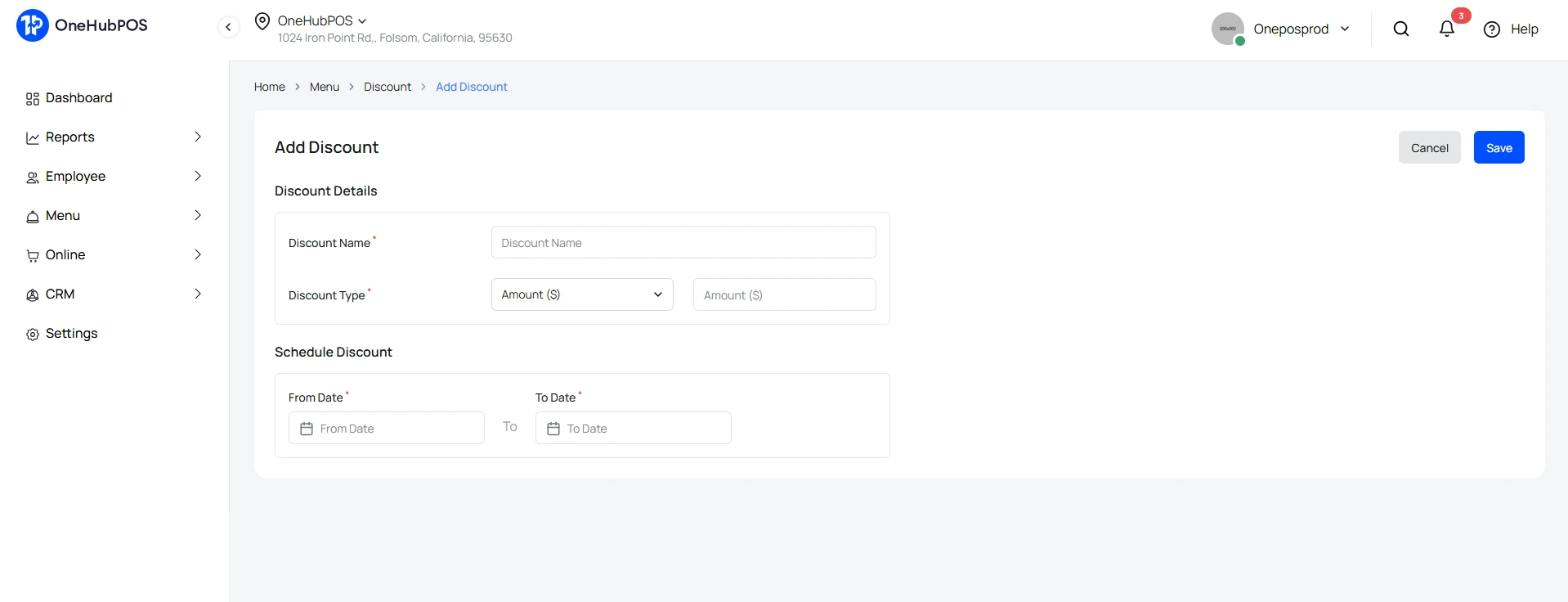
- Set Up Limited-Time Offers: Schedule promotions in advance so discounts apply automatically during the Labor Day weekend.
- Track Inventory in Real-Time: Never run out of your bestsellers. Low-stock alerts help you reorder before shelves go dry.
- Reward Loyal Customers: Use loyalty programs built into your POS to turn one-time buyers into repeat customers (e.g., buy 5 coffees, get 1 free).
Instead of juggling spreadsheets or manually applying discounts, you can let the system handle it while you focus on serving customers.
Event & Promotion Ideas for Labor Day
Here are campaign-ready ideas to inspire your Labor Day playbook:
🍔 For QSRs (Quick-Service Restaurants)
- Family Meal Deals: Offer “Labor Day Family Packs” (burgers, fries, drinks) at a bundled price.
- Drive-Thru Specials: Reward fast movers with a “free side with any combo meal” during peak hours.
- Seasonal Menu Kickoff: Launch your fall flavors — pumpkin shakes, spiced fries, or limited-edition sauces.
- Loyalty Push: Double loyalty points for all orders on Labor Day weekend.
🍻 For Liquor Stores
- BBQ Liquor Packs: Bundle beer cases + mixers, or wine + cheese pairings for backyard parties.
- Tailgate Essentials: Highlight ready-to-drink cocktails, coolers, and kegs with POS-driven promos.
- Gift Card Flash Sale: Offer a small discount on gift card purchases — they’ll spend more later.
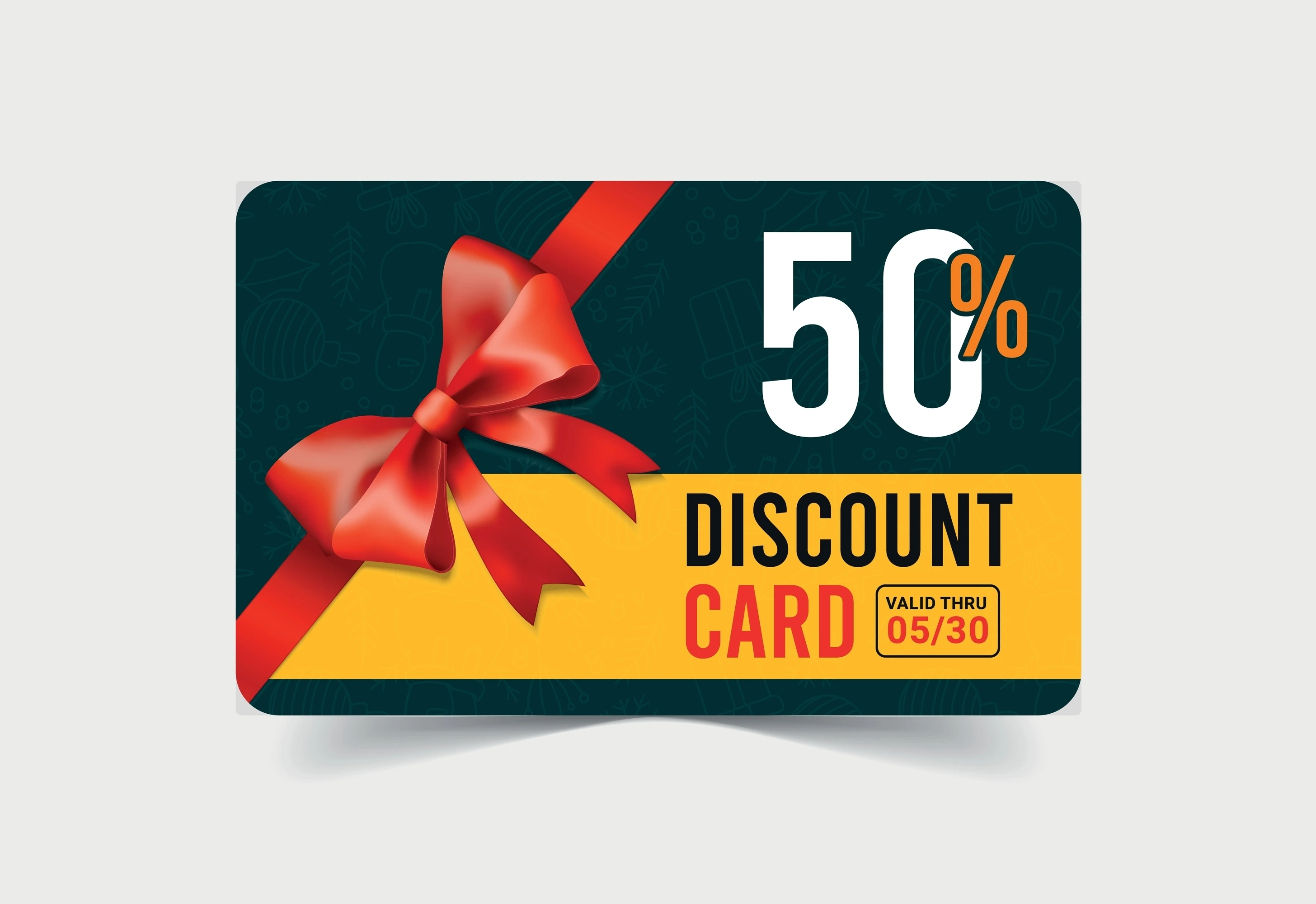
- In-Store Sampling or Tastings: Partner with local breweries or distilleries for quick tastings (POS can track sales impact).
How OneHubPOS Makes It Simple
Here’s how store owners can make all of the above stress-free with OneHubPOS:
- Pre-Schedule Promos: Discounts apply automatically → no need to update registers mid-shift.
- Smart Inventory Tracking: POS alerts when your best-sellers (beer, mixers, burger patties) are running low.
- Multi-Location Control: If you own multiple stores, manage all promos and inventory from a single dashboard.

- Faster Checkouts: Avoid long weekend lines with contactless pay, dual pricing, and cash discount options.
Labor Day is about more than sales. It’s about being the store or restaurant that helps people celebrate stress-free. With the right promotions and the right tools, you can turn this weekend into your biggest win of the season. Book a demo with OneHubPOS today and see how simple it is to run profitable holiday campaigns.
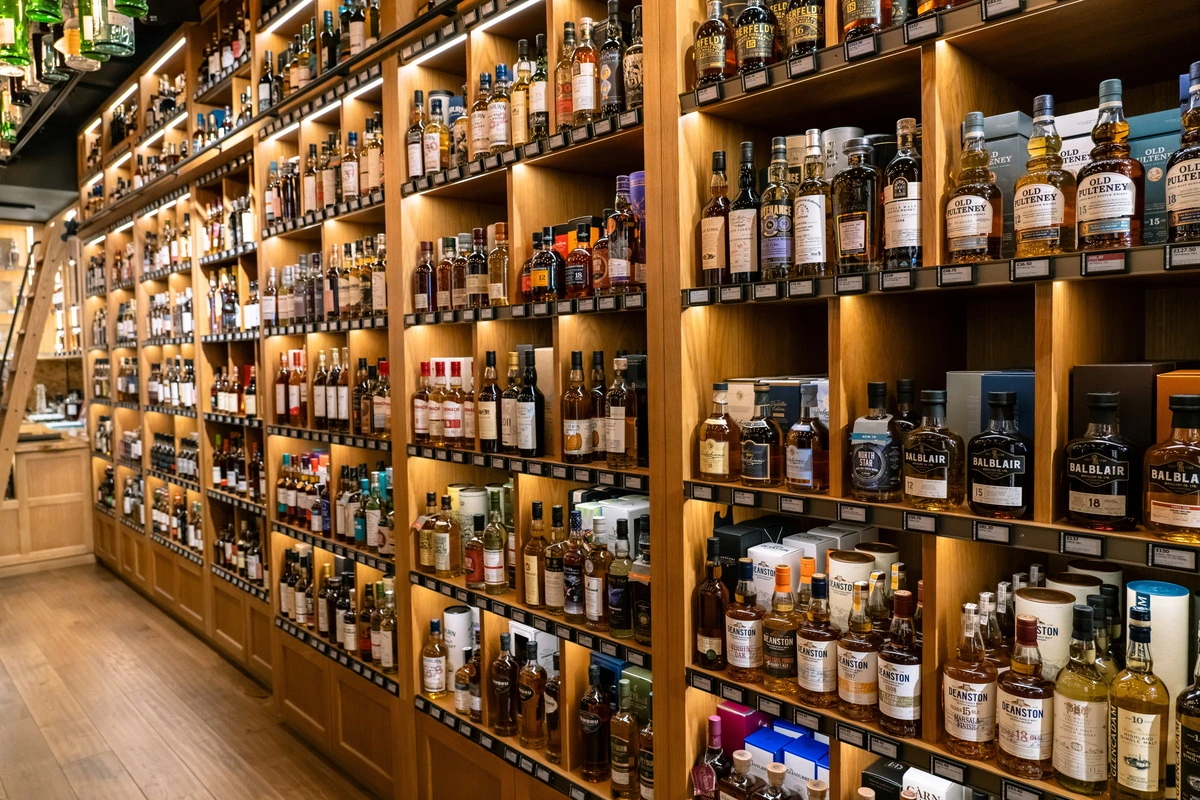

5 min read
Running a liquor store has always been part art, part science. You need to curate the right mix of products, understand your customers’ tastes, and — let’s be honest — keep the regulators happy.
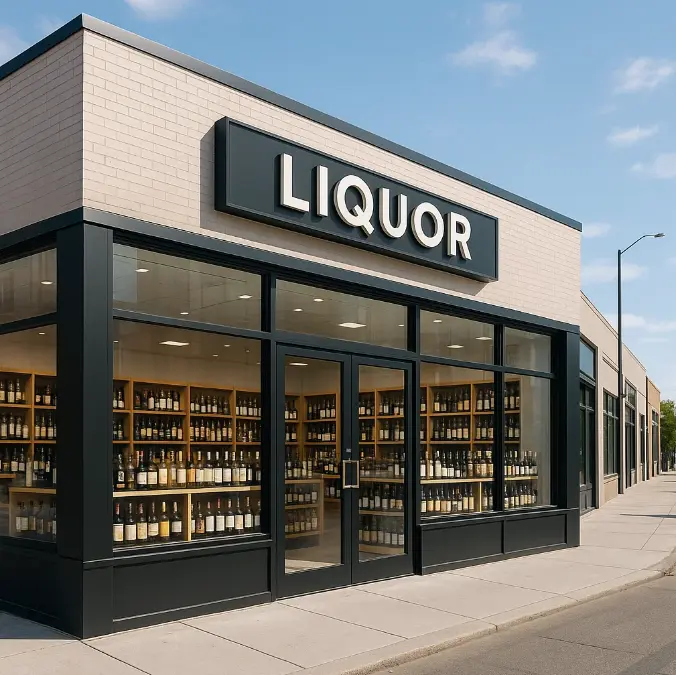
And right now, the art and science of alcohol retail are at a fascinating crossroads. The global alcoholic beverages market, worth $142.8 billion today, is projected to hit $256.86 billion by 2033. In the U.S., the opportunity is big — but so is the complexity.
Every state has its own liquor laws and licensing quirks. Even your marketing campaigns can be regulated. That’s why knowing where to operate and how to stay compliant isn’t just smart — it’s survival.
Here’s where liquor store owners are finding growth, and how the right liquor store POS system can help you grow while keeping your license safe.
1. California: The Volume Leader
Why it’s booming: California isn’t just America’s largest spirits market — it’s one of the world’s most lucrative, fueled by a $4.1 trillion economy and a melting pot of tastes. Premium spirits and craft cocktails are on the rise, especially in urban centers.
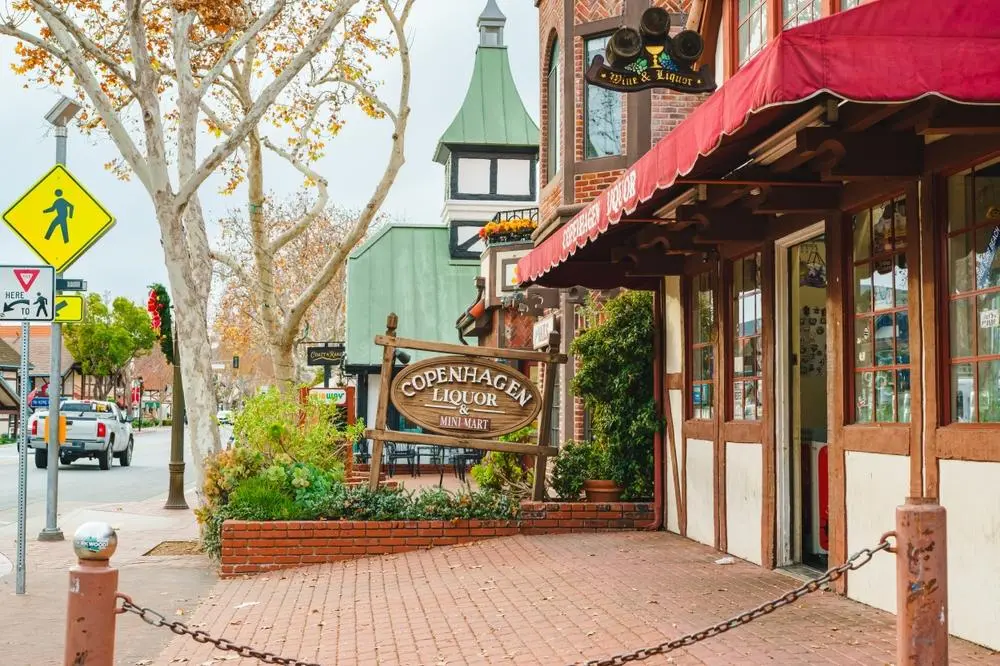
Compliance watch-outs:
- Multiple agencies (including the California ABC) require meticulous documentation.
- Enhanced ID scanning helps meet tougher verification standards.
- Even social media posts about alcohol can draw compliance scrutiny — track them carefully.
Pro-tip: In CA, technology that automatically logs every ID scan can save you from a costly compliance slip.
2. Delaware: The Tax Haven
Why it’s booming: No sales tax. That’s all it takes to lure in cross-border buyers from Maryland, Pennsylvania, and New Jersey. Delaware also leads the nation in per-capita liquor consumption at 2.34 gallons.
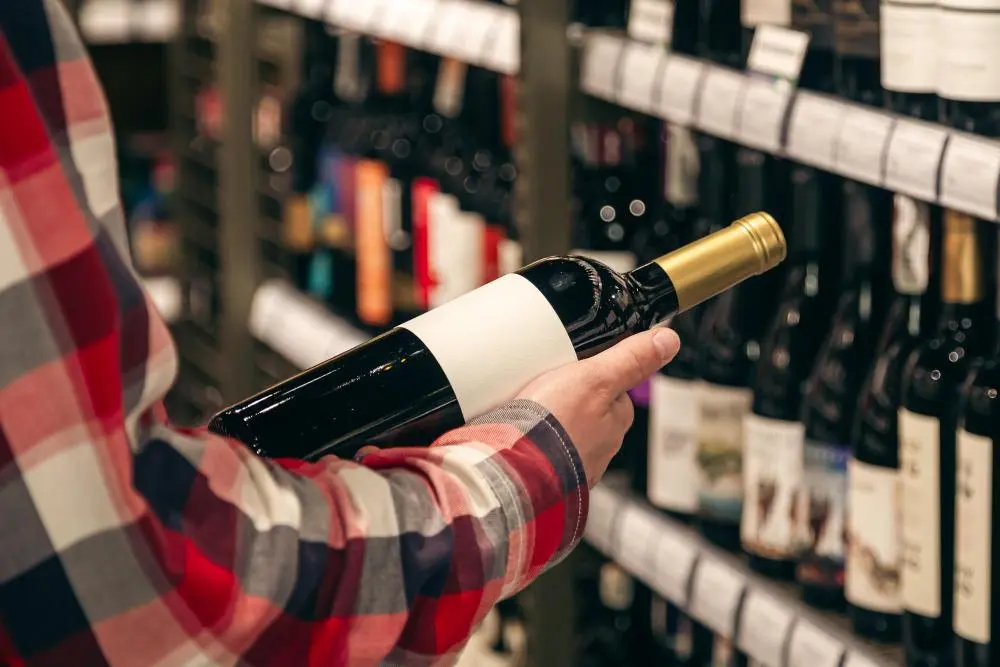
Compliance watch-outs:
- High volume = higher audit risk. Inventory tracking is critical.
- Cross-border buyers mean you need bulletproof ID checks.
- Keep close tabs on interstate commerce rules — they’re easy to overlook.
3. New Hampshire: The State Store Success
Why it’s booming: Tourists flock here for tax-free booze, making it the second-highest state in per-capita consumption (2.02 gallons).
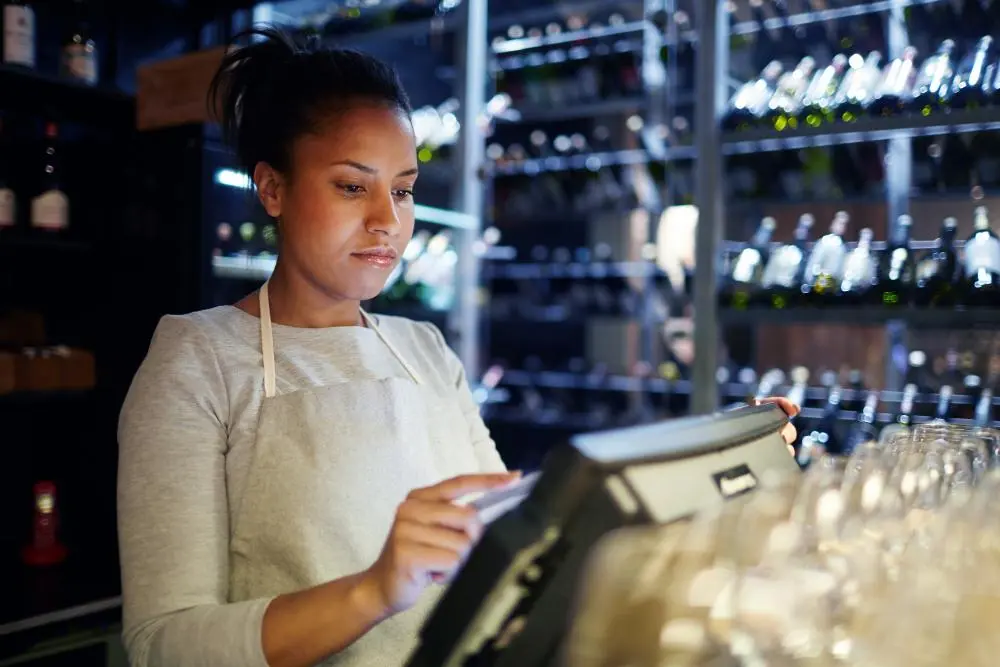
Compliance watch-outs:
- Operates under a state store model with controlled pricing and sourcing.
- Out-of-state buyers require extra diligence.
- The state expects clean, digital inventory records — paper logs won’t cut it.
4. Florida: The Growth Market
Why it’s booming: Between tourism and steady population migration, Florida’s liquor market is projected to reach 13.6B in 2025.
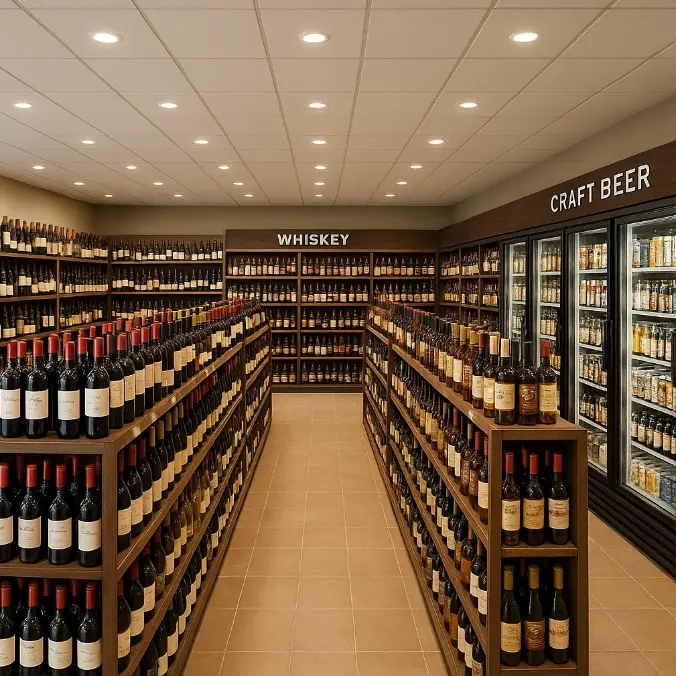
Compliance watch-outs:
- Busy tourist hubs require faster ID verification workflows.
- Seasonal demand spikes can wreck your stock if you’re not using liquor store inventory management software.
- Maintain accurate daily sales reports — Florida DBPR inspectors are known for spot checks.
5. Texas: The Business-Friendly Giant
Why it’s booming: No state income tax, fast-growing cities, and a strong hospitality sector. Texas is the third-largest spirits market, and the state incentivizes TABC certification for staff.

Compliance watch-outs:
- Even with fewer restrictions than some states, federal standards still apply.
- Certification tracking for staff is expected — a POS that logs it can help.
- Be ready for targeted enforcement in college towns and nightlife areas.
6. New York: The Premium Market
Why it’s booming: High-value urban consumers, an established cocktail culture, and a willingness to pay for premium and artisanal spirits.

Compliance watch-outs:
- The State Liquor Authority enforces strict licensing rules.
- In NYC, city-level regulations can add extra layers of complexity.
- Large transactions (like rare bottles) require enhanced documentation.
7. Nevada: The Entertainment Economy
Why it’s booming: Tourism, nightlife, and 24/7 retail opportunities — especially in Las Vegas — keep sales flowing year-round.
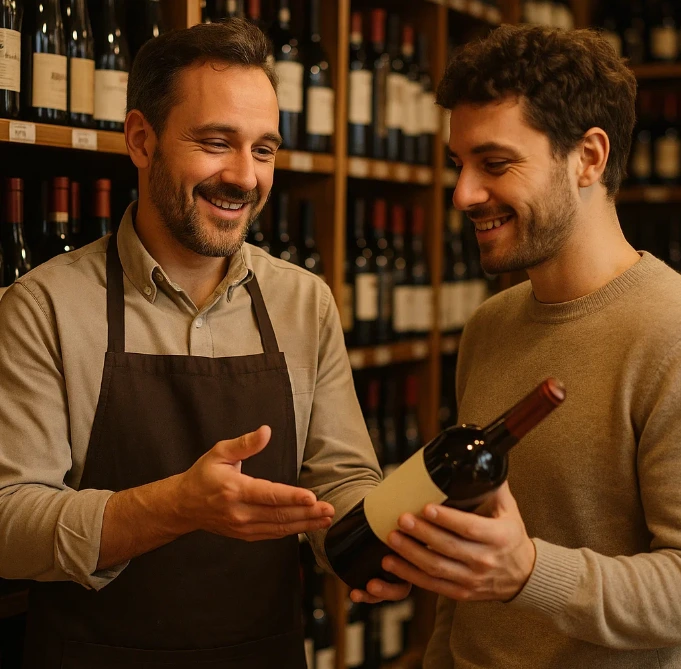
Compliance watch-outs:
- Nighttime and high-volume sales call for lightning-fast ID scanning.
- Entertainment zones often have their own compliance rules.
- POS systems must handle extended hours without errors in daily reporting.
8. New Jersey: The Emerging Player
Why it’s booming: New licensing laws could add 1,300+ liquor store licenses, making entry more affordable compared to New York.
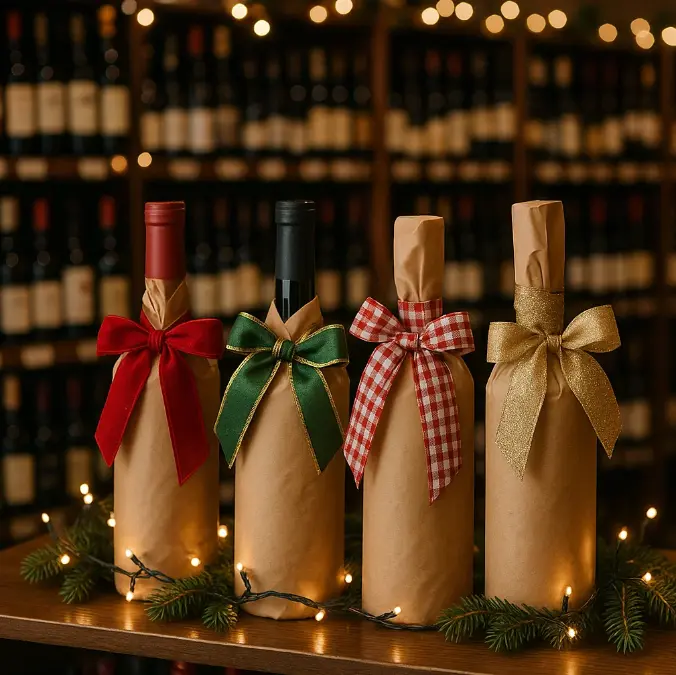
Compliance watch-outs:
- Rules for new license holders are evolving — stay updated with the Division of ABC.
- Competition is rising, so compliance mistakes could be used against you in disputes.
- Document every purchase and sale — especially in high-volume suburban markets.
9. North Carolina: The Control State Success
Why it’s booming: Strong growth in RTDs (ready-to-drink cocktails) and tequila is pushing sales up 1.9% to $1.866B.

Compliance watch-outs:
- As a control state, North Carolina manages distribution and pricing — you work within their system.
- Growth categories like RTDs have their own labeling and storage requirements.
- Regular state reporting is non-negotiable — automation is your friend.
10. Illinois: The Midwest Hub
Why it’s booming: Large food and beverage industry; 130+ distillers, 300+ breweries, 165 wineries; population center in Chicago driving premium spirits and urban sales.
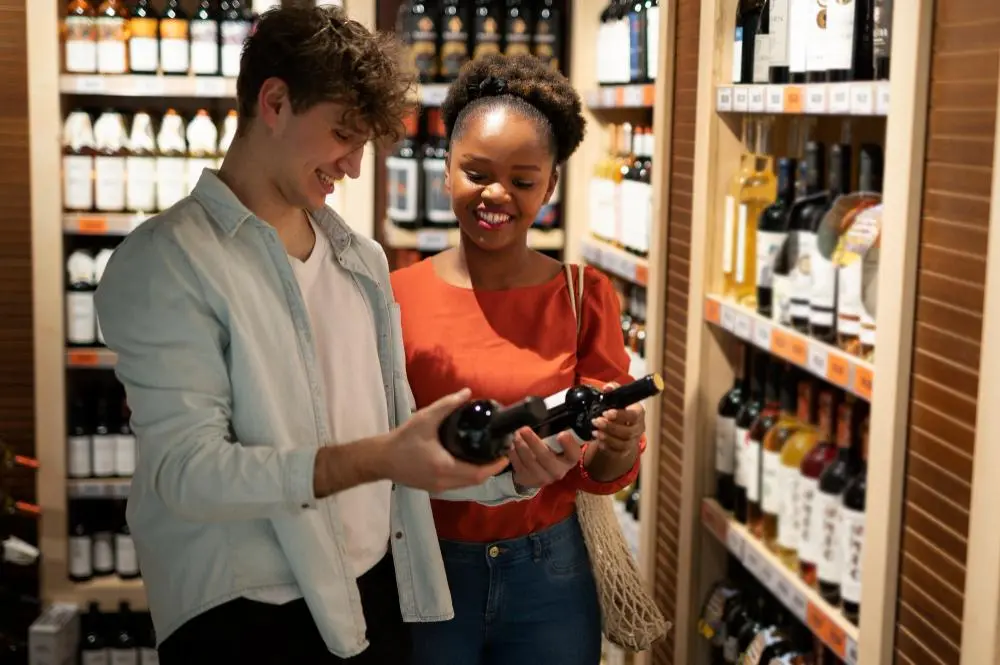
Compliance watch-outs:
- Chicago’s city rules may differ from Illinois state laws.
- Craft and artisanal producers require extra verification for product claims.
- Multi-location operators must manage tax rates across jurisdictions.
The Compliance Fundamentals You Can’t Ignore
No matter where you set up shop, a few rules are universal:
- Age Verification Technology: Scan every ID, every time.
- Digital Record Keeping: Cloud-based storage for quick audits.
- State-Specific Reporting Automation: Eliminate manual errors.
- Manual Tax Setup by Location: Avoid tax rate mismatches.
- Employee Access Controls: Keep transactions secure.
- QuickBooks Integration: Sync your POS to simplify accounting.
Turning Compliance Into a Competitive Edge
Here’s the truth: liquor retail isn’t getting easier. Rules are multiplying. Competition is fierce. And the cost of a mistake can be devastating — from fines to losing your license.
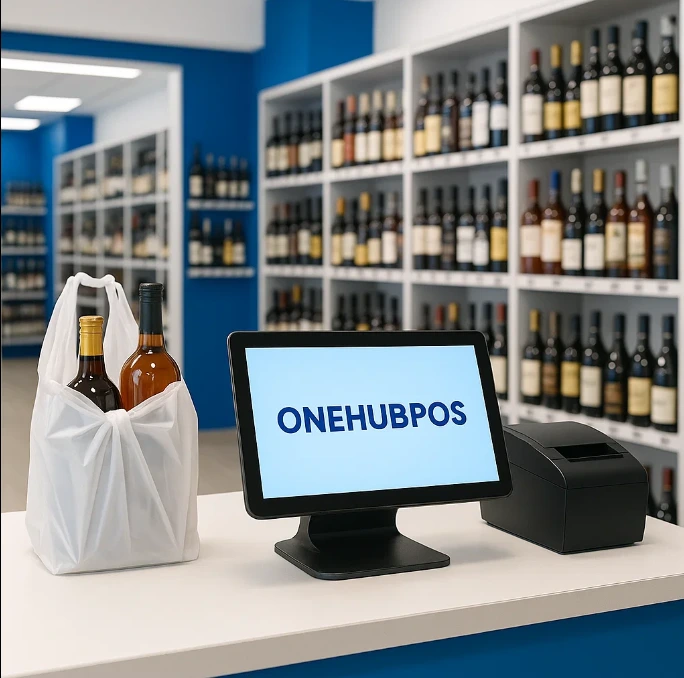
But here’s the other truth: if you have the right systems in place, compliance stops being a headache and becomes a moat that protects your business.
At OneHubPOS, we built our liquor store POS software to do more than process payments:
- Scan and log IDs for every sale.
- Automate state-specific reports so you’re always inspection-ready.
- Control staff access with role-based permissions.
- Handle complex taxes without guesswork.
The result? You sell confidently, stay compliant, and sleep better knowing your license — and your reputation — are safe.
📌 Ready to see it in action? Book a OneHubPOS demo and let’s make compliance your competitive advantage.
